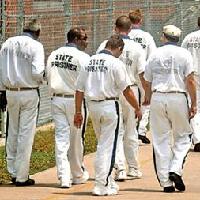
The Struggle Continues
[see also: Georgia state prisoners strike for human rights]
“Prison riots change with time and place. They are shaped by the political events and issues of the day, the prevailing ideas about imprisonment, and the political struggles in and around prison…”
(Bert Useem and Peter Kimball, States of Siege: U.S. Prison Riots 1971-1986, pg. 9)
The Georgia state prisoners’ strike of December 9-16, 2010 should not be classified as a prison riot. It was a political uprising using the tactic of non-violent civil disobedience with programmatic demands against injustice and inhumane conditions that the Georgia state penal system is inflicting on inmates. The strike must be placed in the wider context of a declining global system of capitalism and a combative international working class and poor, as the ruling elite attempts to place its crisis on the backs of working people and the poor through austerity and cutbacks to social and public spending.
The Georgia state prisoners’ strike and the hunger strike by four prisoners held in Ohio State Penitentiary, a supermax prison, was organized to protest the highly restrictive and discriminatory conditions they have been subjected to, the latter since they were moved to the prison in 1998 following the 1993 Lucasville prison uprising. From this uprising, all four inmates had received wrongful convictions and death sentences when the uprising resulted in deaths. These events showcase the possible signs of a rising political consciousness and organizing among the most downtrodden of our society, and its ripple effect.
The corporate media will not report or investigate the conditions of prisoners in the most advanced capitalist country in the world that speaks of ”democracy” and ”freedom,” but warehouses more human beings than any society in world history. The mouthpieces (Atlanta Journal-Constitution and New York Times) of big business and the prison system have only sought to fan the flames of public fear with talk of inmates using contraband cell phones to organize the strike.
Only through the work of grassroots organizations and the Concerned Coalition to Respect Prisoners’ Rights, which has conducted fact-finding missions to investigate the daily conditions prisoners face, has the physical brutality and retaliation inflicted upon inmates like Terrance Dean of Bibb County, Georgia, been exposed. His condition and location was withheld from family and activists for hours by Macon State Prison authorities. There are 37 inmates missing as a result of the strike.
The Georgia state penal system and big business are attempting to silence the movement for human rights and teach the prisoners the price you pay for standing up for justice. While public scrutiny is coming down on the prison authorities concerning violence by the prison guards, they are reinforcing the divide/conquer tactic of indiscriminate violence and murder. As one Georgia state inmate states: “[Prison] staff are compensating inmates, primarily so-called gang members who want to be thugs, to attack and beat and stab whomever they select. This way, the corrections can’t be blamed. Also they are holding mail that is being sent to organizations or people supporting us in the movements.”
The Movement Must Spread
The work of Concerned Coalition to Respect Prisoners’ Rights and website journals and activists like Black Agenda Report are invaluable in publicizing the demands of the prisoners and shining a bright light on the business of mass incarceration. The struggle for prisoners’ rights and the need to abolish the New Jim Crow must be a central demand of our movement to end class and racial oppression. There is a great need for inmates and prison guards to organize for their rights and to be able to defend themselves against the prison authorities, and link up with the wider labor movement. The struggle against the massive level of incarceration in U.S. society and the conditions facing prisoners must be linked with the broader social crisis facing working people, poor, and youth, and in particular youth of color. The greatest lesson the Georgia state prisoners’ strike provides is an example of united and collective action to transform our reality and conditions.


Be the first to comment